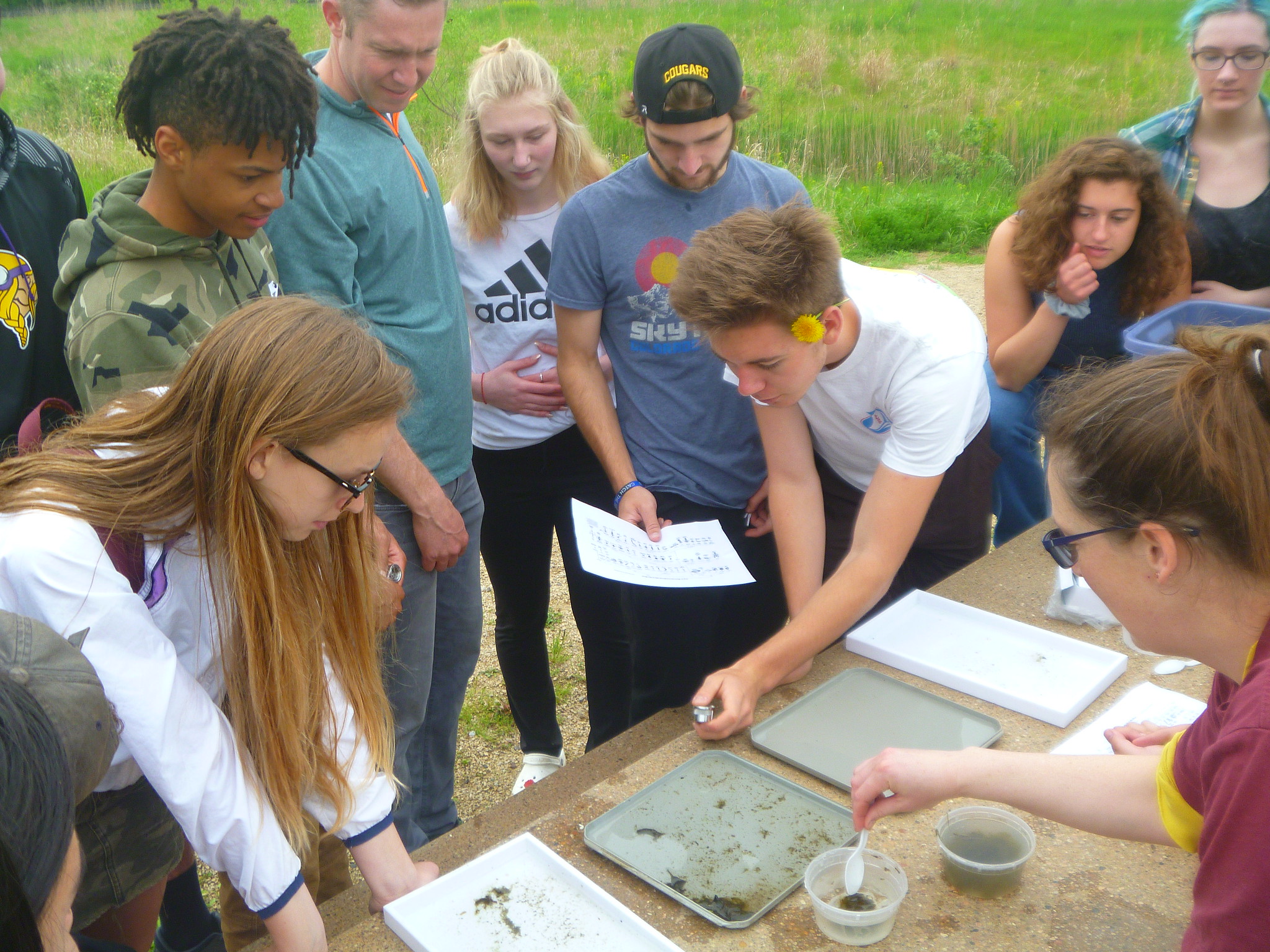Another banner year for our young river stewards!
A big thank you to all the young river stewards who helped us protect and restore the Mighty Mississippi in 2019 — all 2,482 of you!
This year 1,174 students stenciled educational messages alongside storm drains, collected trash throughout Twin Cities parks and helped not only restore habitat along the river but research the best ways to keep it healthy in the future. Plus, another 11 students participated in our new pilot program for young stewards who especially want to explore the environmental field.
Youth Empowerment Program
If you visited the FMR office on a Tuesday in early August, you might have seen monarch butterflies, caterpillars and chrysalises in mesh cages. You might have spotted a baby painted turtle nestled in a yogurt container, jars of Mississippi and Minnesota river water and pictures of aquatic invasive species.
All of these represent our first-ever Youth Empowerment Program participants' capstone projects. Over eight weeks this summer, FMR staff worked with a group of high school students to explore environmental topics, increase job skills, meet professionals in the environmental field and complete their independent projects. And of course, we topped off the experience with a canoe trip down the Mississippi.
Stenciling for water quality
Despite a spring season full of flooding, we exceeded our goals for stenciling St. Paul storm drains. Youth spraypainted educational messages alongside 1,447 drains year and distributed 5,163 flyers this year. Add in the work of our adult volunteer group and we stenciled 2,521 drains altogether — 10 percent of the storm drains in St. Paul!
Stenciling is an effective way to spread the message that our storm drains directly connect to the river. Seeing "Keep 'em clean, Drains to river" painted on our street corners reminds us all that there is no magic filtration system — whatever we see along the curb, gutter or roadside gets carried into the river when it rains. That includes pollutants like road salt and cigarette butts as well as leaves, grass, fertilizers, pesticides, oil, gas, paint, antifreeze and everyday trash.
As volunteers stencil storm drains, they also clean the area around them and distribute flyers to nearby homes and businesses full of pollution reduction tips.
Particularly noteworthy stenciling groups included Bright Water Montessori from North Minneapolis, who weathered a particularly hot summer day to do some good for the river, and working with youth from all over the country at the Lutheran Church Missouri Synod National Youth Gathering.
Invasive species removal
As many FMR supporters are aware, invasive plants have drastically changed Minnesota's landscape. FMR volunteers often remove garlic mustard and buckthorn throughout the metro area. And our younger volunteer stewards are no different. This year, 179 youth spent 267 hours battling buckthorn, garlic mustard, Siberian elm and new invasive plants on the scene.
Spring was garlic mustard removal season. For the fourth year in a row, Andersen United in Minneapolis helped pull garlic mustard at the sand flats in the river gorge. Although a bit on the young side, these 2nd- and 3rd-grade habitat restorers pulled as much garlic mustard as the previous years' 5th-graders. Minnehaha Academy, also in south Minneapolis, got involved this year first learning about invasive species and then venturing into the river gorge to remove garlic mustard.
Fall was buckthorn removal time and no group was more dedicated to the task than the four Farmington Chapter of the National Honor Society members who hauled buckthorn from Rambling River Park in Farmington during a downpour. Everyone was soaked through by the outing's end yet still had a smile on their face.
Cleanups along the river
Many people focus on Earth Day to get out and pick up trash, but we also encourage groups to head out any time of year to pick up litter. A special thank you to both Nativity Church and University of Minnesota students who held community cleanups this year to help keep the river clean.

Como Park Senior High School students identify macroinvertebrates to assess water quality at Trout Brook Nature Sanctuary in St. Paul.
Classroom education
While we always enjoy the outdoors, FMR spends plenty of time inside classrooms, too. So far in 2019, we've engaged approximately 1,200 students in indoor programs about watersheds, wetlands, invasive species and erosion.
Many of these students also stencil, clean up trash or help restore habitat, putting what they learn into action.
Student scientists
FMR also partners with schools seeking to connect students to our community's natural resources on a deeper level. This year, three high schools helped monitor pollinators, macroinvertebrates and garlic mustard suppression techniques.
Both Como Park Senior High School in St. Paul and Hastings High School students identified pollinators at local native plantings and worked with FMR to submit the data to the Minnesota Bee Lab. Como High students also sampled small stream-dwelling insects or macroinvertebrates from Trout Brook to keep tabs on its water quality. And the Harding High School Earth Club conducted a spring experiment at Willowbrook property on garlic mustard suppression and seeding native woodland species.
Team up with us this winter!
Even though the outdoor event season is over if you'd like to connect about an indoor program for a classroom or youth group, let us know!
Most programs are an hour long and include a hands-on activity. To learn more, check out our menu of offerings or contact FMR Youth Coordinator Kate Clayton at education@fmr.org.
Looking ahead to the next field season? We start booking programs in February. Watch Mississippi Messages for announcements in early 2020.